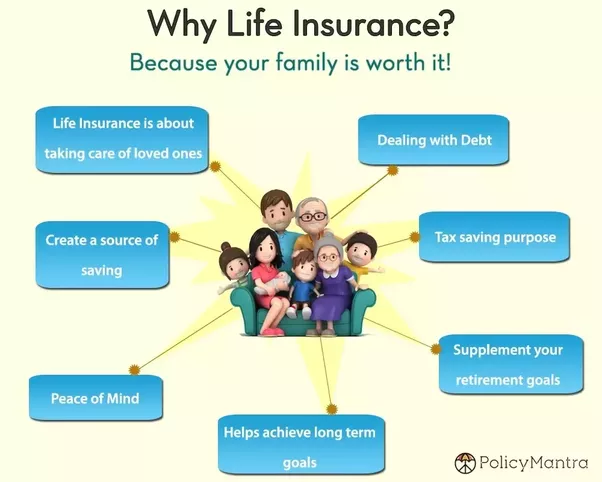Pacific Prime Things To Know Before You Get This
The Buzz on Pacific Prime
Table of ContentsSome Ideas on Pacific Prime You Need To KnowSome Of Pacific PrimeSome Known Factual Statements About Pacific Prime 10 Easy Facts About Pacific Prime Explained
In a lot of states, the insurance company is needed to send you a duplicate of the modifications to your plan. It is important that you read Endorsements or Riders so you recognize just how your plan has changed and if the policy is still ample to meet your requirements. To obtain a copy of your insurance plan, please call your insurance policy agent or company.
The Institute of Medication (IOM) Board on the Consequences of Uninsurance launches an extensive examination of evidence that addresses the value of health and wellness insurance policy protection with the publication of this report. Insurance coverage Issues is the initial in a collection of 6 records that will be provided over the next 2 years recording the reality and consequences of having actually an approximated 40 million people in the USA without medical insurance protection.

Getting The Pacific Prime To Work
The goal of this series of research studies is to refocus policy focus on a historical trouble. Adhering to the lengthiest economic growth in American history, in 1999, an estimated one out of every 6 Americans32 million grownups under the age of 65 and more than 10 million childrenremains without insurance (Mills, 2000).

Ten percent of the populace accounts for 70 percent of healthcare expenses, a relationship that has actually remained continuous over the past three decades (Berk and Monheit, 2001) - international travel insurance. Hence medical insurance remains to serve the function of spreading risk even as it increasingly finances regular care. From the point of view of healthcare carriers, insurance carried by their patients helps secure a revenue stream, and communities gain from monetarily sensible and secure healthcare professionals and organizations
Federal government offers medical insurance to populaces whom the exclusive market might not serve effectively, such as impaired and senior citizens, and populations whose accessibility to wellness treatment is socially valued, such as kids and expecting ladies. The supreme ends of health and wellness insurance protection for the individual and areas, including workplace areas of workers and companies, are improved wellness results and quality of life.
Getting The Pacific Prime To Work
Staff members rank wellness insurance policy first by much in value amongst all the benefits used in the workplace (Salisbury, 2001). There have been substantial financial investments of personal and public funds to supply wellness insurance, numerous individuals still have no insurance coverage. Despite considerable reporting of study findings and healthcare study results, the general public remains baffled and mistaken regarding Americans without medical insurance and the implications of doing not have protection.

Without question, the complexity of American healthcare funding devices and the wealth of sources of information contribute to the general public's complication and apprehension about medical insurance stats and their interpretation. This report and those that will follow purpose to distill and provide in readily reasonable terms the substantial research that births on inquiries of medical insurance coverage and its importance.
Fifty-seven percent of Americans surveyed in 1999 believed that those without health insurance coverage are "able to obtain the care they require from physicians and hospitals" (Blendon et al., 1999, p. 207). In 1993, when nationwide focus was concentrated on the issues of the without insurance and on pending health and wellness care legislation, just 43 percent of those surveyed held this idea (Blendon et al., 1999).

They additionally get less preventive solutions and are less most likely to have routine look after chronic problems such as high blood pressure and diabetes mellitus. Persistent conditions can result in pricey and disabling issues if they are not well managed (Lurie et al., 1984; Lurie et al., 1986; Ayanian et al., 2000). One national survey asked more than 3,400 adults concerning 15 extremely serious or dark conditions.
Pacific Prime Fundamentals Explained
Added evidence exists later in this chapter in the conversation of insurance coverage and accessibility to healthcare. https://pacificpr1me.weebly.com/. People without medical insurance are young and healthy and balanced and pick to go without protection. Practically fifty percent (43 percent) of those evaluated in 2000 thought that individuals without wellness insurance coverage are most likely to have health issue than individuals with insurance coverage
Voters and plan manufacturers in focus team conversations define those without insurance as youngsters that have the chance to be covered and feel they do not need it (Doorperson Novelli, 2001). Contrasted to those with at the very least some personal insurance coverage, the uninsured are less most likely to report remaining in superb or very great wellness (Agency learn the facts here now for Health Care Research Study and Top Quality, 2001).
SOURCE: Center for Expense and Funding Studies, Company for Medical Care Research and Top quality, based on MEPS information. Youthful grownups in between 19 and 34 are much more most likely to lack medical insurance than any kind of other age team. This is chiefly due to the fact that they are much less usually eligible for employment-based insurance coverage as a result of the nature of their work or their brief period in it.
The perception that people without insurance have better-than-average health and wellness complies with from perplexing the reasonably young age profile of the uninsured with the far better health, usually, of more youthful individuals. This covers the link in between health standing and health and wellness insurance coverage. For those without access to workplace health insurance, poor wellness is a possible barrier to buying nongroup protection since such protection may be extremely priced, exclude pre-existing problems, or be just not available.